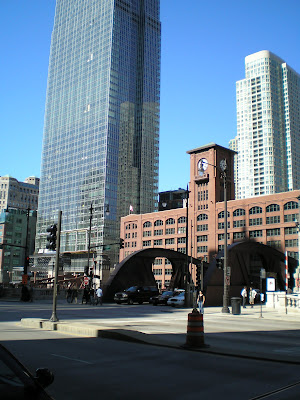
"Hell's Half-Acre" was a common term for the slum neighborhoods in many cities (including a possibly more famous one in Honolulu which gave its name to a 1954 film noir hit). There were even Hell's Half-Acres in the Chicago suburbs, including one in the Northwest suburb of Niles.
But Chicago's Hell's Half-Acre was the block bounded between State St. and Third Ave. (later known as Plymouth Place, and even later known as Plymouth Court), and south of Polk, down to around Taylor. in the 1870s and 1880s, Hell's Half-Acre was one of the city's toughest blocks, adjacent to Custom House Place, and primarily serving the transient population that arrived at Dearborn Station, around the corner on Polk. "Serving" might not be the right word -- "robbing" was more accurate. It is said that there was not a single building on the block that was not a gambling den, a bordello, a saloon, a brothel, or some combination of these. Police never traveled into the area, except in pairs, so dangerous were the residents.
The name for the block is first noted in the Tribune in 1871, in a report about a group of drunken Swedes who were assaulted in a Hell's Half-Acre saloon by a gang of Know-Nothing nativists who resented the immigrants' revelry.
Another similar (and politically incorrect) report from 1877 described a common practice among the denizens of this depressed area -- seeking sympathy by claiming more children than they really had:
In a certain district on the South Side where the colored people, the Italian padrones, Polish Jews, and the mixed nationalities predominate, the custom of borrowing children is quite extensive as a means of eliciting the sympathy of the visitor. The trick has been quite successful among the Poles and colored people, who have repeatedly passed their offspring up and down the alleys in the rear of State street and Third and Fourth Avenues. It must be said that the Poles are the heaviest dealers in this kind of business. The art of concealment seems to have developed into a profession among these people.
















































